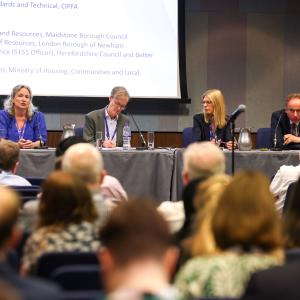NHS England’s Five Year Forward View sends a hard-hitting message to politicians: stop blocking service changes and find us some more funding.
Two weeks ago Simon Stevens, chief executive of NHS England, published his Five Year Forward View laying out a series of challenges for citizens and patients, doctors and hospitals and a future prime minister and chancellor.
Starting with citizens, the document expects a ‘radical upgrade in prevention and public health’. That call to action may sound familiar but ‘the warning has not been heeded – and the NHS is on the hook for the consequences’. What’s more, it’s no longer putting up with it. If the NHS is our national religion, then the Forward View provides a clear message from the pulpit that the ministry is fed up of only seeing us when we want something.
The problem though is that the NHS has often struggled to get public support for the change it wants to see in the world – the rows over the poorly handled patient data initiative are a recent example. And I bet that just two weeks on what most people remember from this document’s publication is its call for more funding – more on which later – rather than the proposals for changing services or the relationship with patients. This suggests that NHS England will have to work very hard on the agenda that it describes for turning the NHS ‘into a social movement’.
The initial ideas the document presents include better support for carers (decoded: you need to help out more, but look we’ll get you started); creating new options for health-related volunteering (actually you need to help out a lot more); and exemplifying by the role of the NHS as an employer what other employers can also do to achieve wider health goals (if we can do it, so can you).
These look like good starting points but there are very few hints as to what incentives we might be given as citizens and patients to become more engaged. Equally there are sentences that suggest unfortunately that the NHS might still think of citizens and patients as inputs to a process rather than partners in a service – for example, the document confesses, ‘we have not fully harnessed the renewable energy represented by patients and communities’.
Family doctors and hospitals are the second factor of production in Stevens’ industrial strategy. While former health secretary Andrew Lansley may have favoured letting a thousand flowers bloom through local and clinician-led commissioning, this new document proclaims, ‘Different local health communities will be supported by the NHS’ national leadership to choose from amongst a small number of radical new care delivery options.’ In other words, you’ve had your fun, now the grown-ups are taking over. Though conversely there is going to be a role for patients in commissioning. Stevens advocates integrated health and social care budgets held and managed by individuals. Our own work on integration – publishing soon – will develop further ideas about patient-led integration. The big question Stevens doesn’t tackle for now is what happens when patients’ choices are directed towards something other than one of the ‘radical new care delivery options’ that the NHS England management team might have in mind.
Finally, the Forward View suggests that the NHS has two expectations for politicians: first, that they will allow service transformation to take place, e.g. avoid vetoing every proposal for hospital closure; and second, that they will provide extra funding needed to help close the gap between resources and patient needs.
The timing of the publication comes after party conferences where Ed Miliband promised the receipts from a new mansion tax to the NHS and David Cameron rebuked those who question his commitment to the service. NHS England might be thinking: we hear all that, but answer the actual question, will you.
The funding gap that the document identifies is £30bn in 2020. It is certain that this figure will become the reference point for judging future political commitments on funding. And, if anyone wants to shade it by a billion here or there, then it’s worth quoting the paragraph in full where the choices available to politicians after the next election are explained (it’s a masterpiece of the genre).
‘Flat real terms NHS spending overall would represent a continuation of current budget protection. Flat real terms NHS spending per person would take account of population growth. Flat NHS spending as a share of GDP would differ from the long-term trend in which health spending in industrialised countries tends to rise as a share of national income.
In other words, even the most expensive of the three future directions for spending – i.e. NHS spending rises in line with GDP growth – would be a historical anomaly. But, you know, if that’s the best that you can do… It’s a big ask of politicians in what will be a continuing age of austerity though it is accompanied by just as big an ask of the NHS itself. The Forward View reveals that the long-run performance of the NHS in improving efficiency is a gain of 0.8% per year. The target is to reach 3% per year by the end of the five-year period covered by the plan.
Meeting that would be a monumental achievement. It might not happen, but then Stevens doesn’t have to stand for office and win power in the general election next year. For those that do, the £30bn is the figure that will stick. No one has the room in their fiscal plans to provide anything like that amount, but they will need a promise to make in terms of new funding by 2020 – probably not far short of £10bn – and equally be able to tell a convincing story about enabling reform, including the hard choices about changing and closing services. Now that the NHS has got tough with them, politicians who talk loosely about decentralisation or integration will look increasingly out of touch.
Emran Mian is director of the Social Market Foundation









